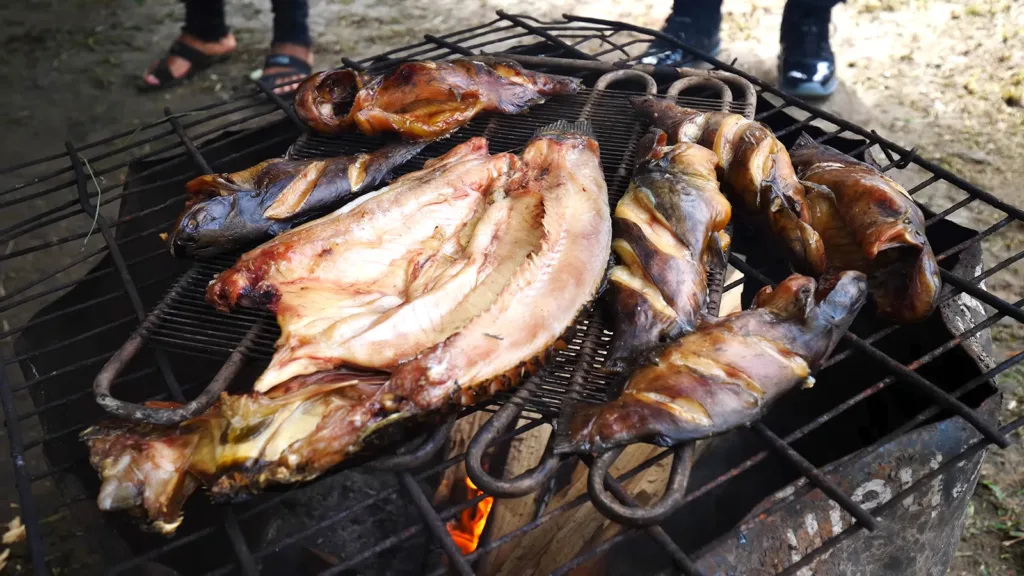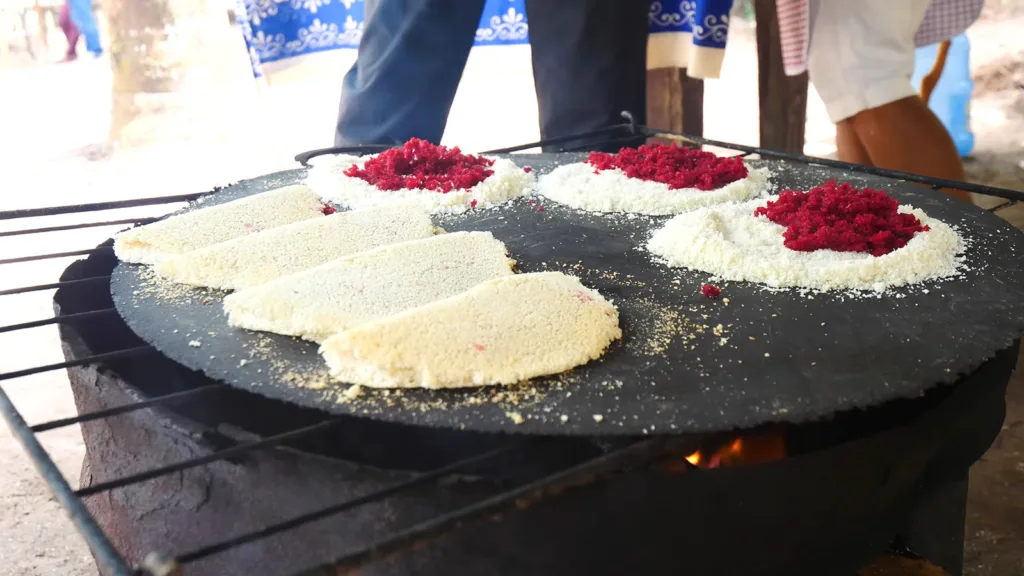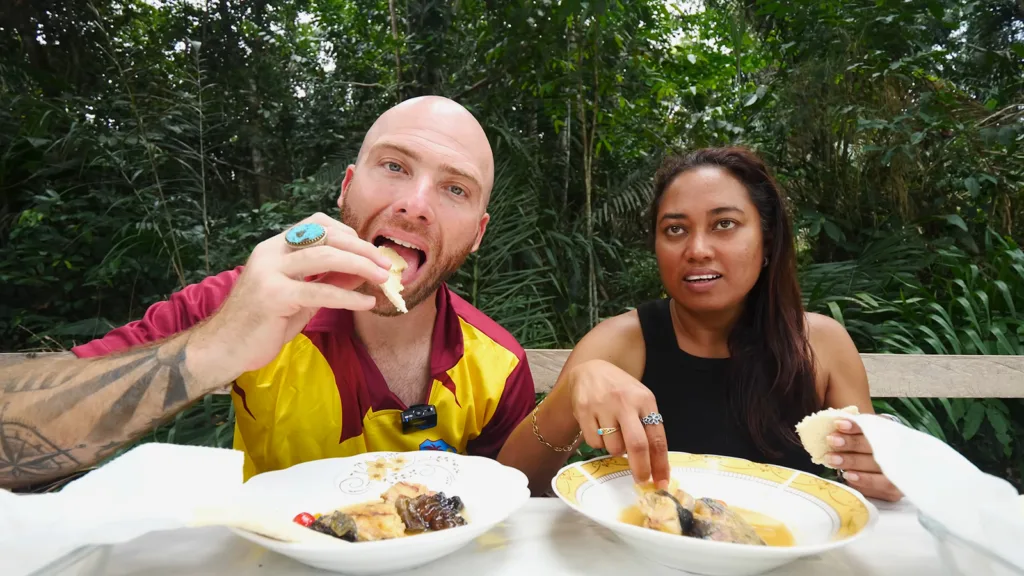After a few days exploring Georgetown, Guyana, I headed south to visit an indigenous village to dive deep into the local culture and, of course, try some of the local indigenous food in the jungle!
My guide Stacey from Visit Guyana and I headed to Moraikobai, which is a village in the rainforest, roughly 4 hours southeast of the capital. It took an hour-long drive and a two- to three-hour ride on a speedboat to get to the Hubudee Eco Lodge, which has two rooms.

We saw some indigenous people make cassava bread, tuma (a fish dish), and cassareep (the main ingredient in pepperpot) being made. A lot of the indigenous food here revolves around cassava, a type of root. There, we met Gary, our local guide, who took us to see a local woman scraping the skin off the cassava roots and washing them. Then, they grate it and place it in a wicker contraption that extracts the liquid!
They extract the juice to dry the cassava out enough. They then put it over a fire to completely dry it out and crumble it into a powder, which they then place on a tawa over a fire. Then, they boil the cassava juice to get rid of the cyanide in it. Then, it reduces to form cassareep.

They also made quinches, which is an Indigenous food made up of the cassava powder patties folded around shredded reddish coconut. You can also boil the cassava juice to make a soup called tuma, which contains wiri wiri peppers and smoked fish.
The quinches were toasty and had a nice crunch. I loved the fresh cassava and coconut! Then, it was time for lunch at the lodge. We stopped at a hubudee tree, where Gary pulled down some fruit that you peel with your teeth to get to the meat. It’s pretty sweet but it doesn’t contain much meat because there’s a large seed inside.

We had two types of tuma (one smoked, one fresh), a hard cassava bread, a soft cassava bread, and a pine drink for lunch. Tuma is another classic Indigenous food and is known as the original pepperpot! You eat it with the cassava bread, which absorbs the cassava juice from the tuma quickly. The cassava juice is a little spicy and smoky!
The best part of the smoked fish was the skin. It was delicious! Then, we crushed some of the wiri wiri pepper into the tuma with the cassava. It was such a unique flavor. I’d never had anything like it! The wiri wiri pepper was spicy!
The fresh fish was bony but very buttery. The fresh pine juice was also very nice and not too sweet. It was really refreshing! What an amazing introduction to Guyanese Indigenous food!
Counter
101 Countries • 1432 Cities